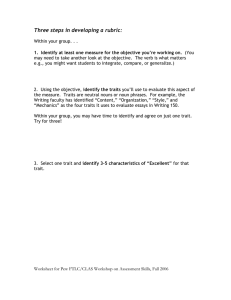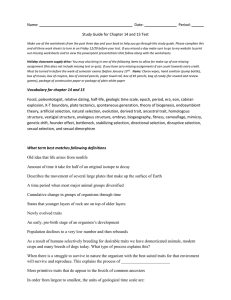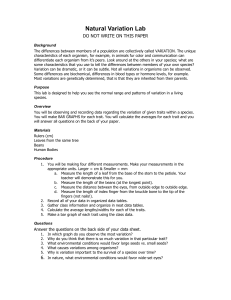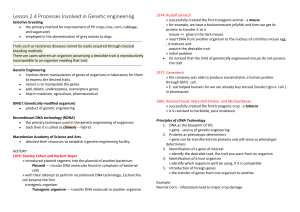DOK 6 Study Guide Review
advertisement
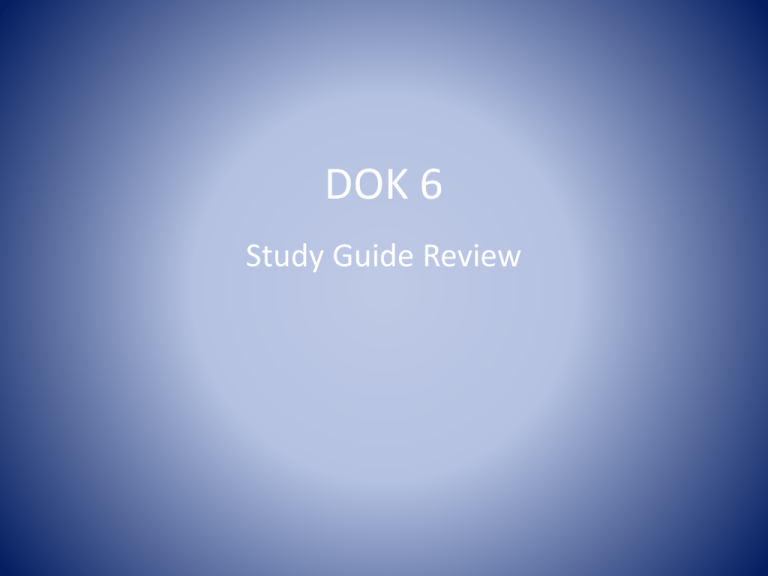
DOK 6 Study Guide Review Defining Terms • 1. Extinct-death of the ENTIRE species • 2. Adaptation-trait that helps the ENTIRE population • 3. Mutation-RANDOM changes in the code of DNA • 4. Natural Selection-organisms with helpful traits survive better in the environment • 5. Environmental Pressure-a change in surroundings Examples of Terms • • • • 6. Extinction-dinosaurs 7. Adaptation-dense bones 8. Mutation-coat color 9. Natural Selection-birds with long beaks survive better because they can reach worms that live in tree trunks • 10. Environmental Pressure-pollution Evidence for Evolution • Anatomical Similarities-organisms that have similar skeletons may have come from a common ancestor • Radio metric dating-a way to find the actual age of rocks or fossils (like radio carbon dating) • Fossil Record-the record that shows where organisms were located or their distribution in the world Evidence for Evolution, continued • Developmental Similarities-different organisms have similar stages during early development • Genetic Similarities-similar organisms have similar DNA and may have come from a common ancestor Examples of Evidences of Evolution • Anatomical Similarity-the arm of a human, the leg of a cat, the flipper of a whale and the wing of bat • Radiometric Dating-radio carbon dating • Fossil Record-dinosaurs • Developmental similarity-humans and fish look similar in the early stages of development • Genetic Similarity-humans and mice are both mammals and their DNA is similar Genetic Variation • Different gene combinations add to the diversity of a population • Example-dog breeds Favorable Trait • A trait that is beneficial to a population in some way. This trait will likely be chosen by natural selection to become a common trait in the population because it strengthens the organism. The organism will survive over its competitors. • Example: big beaks during a drought that can pick up big seeds when little ones are not available Graph • 25. True • 26. The prey population increases and supports the predator need for food. • 27. True • 28. The predator population decreases and the prey population is able to reproduce and thrive in the environment. Diagram • 29. True • 30. C. The environment was once an ocean filled with fish and became a forest filled with dinosaurs. Paragraph • First, there is a group of organisms. In a few of the organisms, their DNA is mutated. In their current environment, they are all able to thrive, so their different traits show up in the population as genetic variation. For example, there were 8 varieties of Jellybellicus organisms and their populations were equal at the beginning of the lab. If an environmental pressure (such as pollution, a predator, a weather event) occurs, then some of those traits might give an organism an advantage. If an organism has an advantage, it gets to live and make some babies. If an organism does not have a favorable (helpful) trait, it dies. That process is called natural selection. Over time, if natural selection takes place for many generations, the entire population might end up with that favorable trait. If that happens, the trait is called an adaptation. In our Jellybellicus lab, after several generations, we ended up with 3 possible adaptations: camouflage, mimicry, and poisonous traits.


